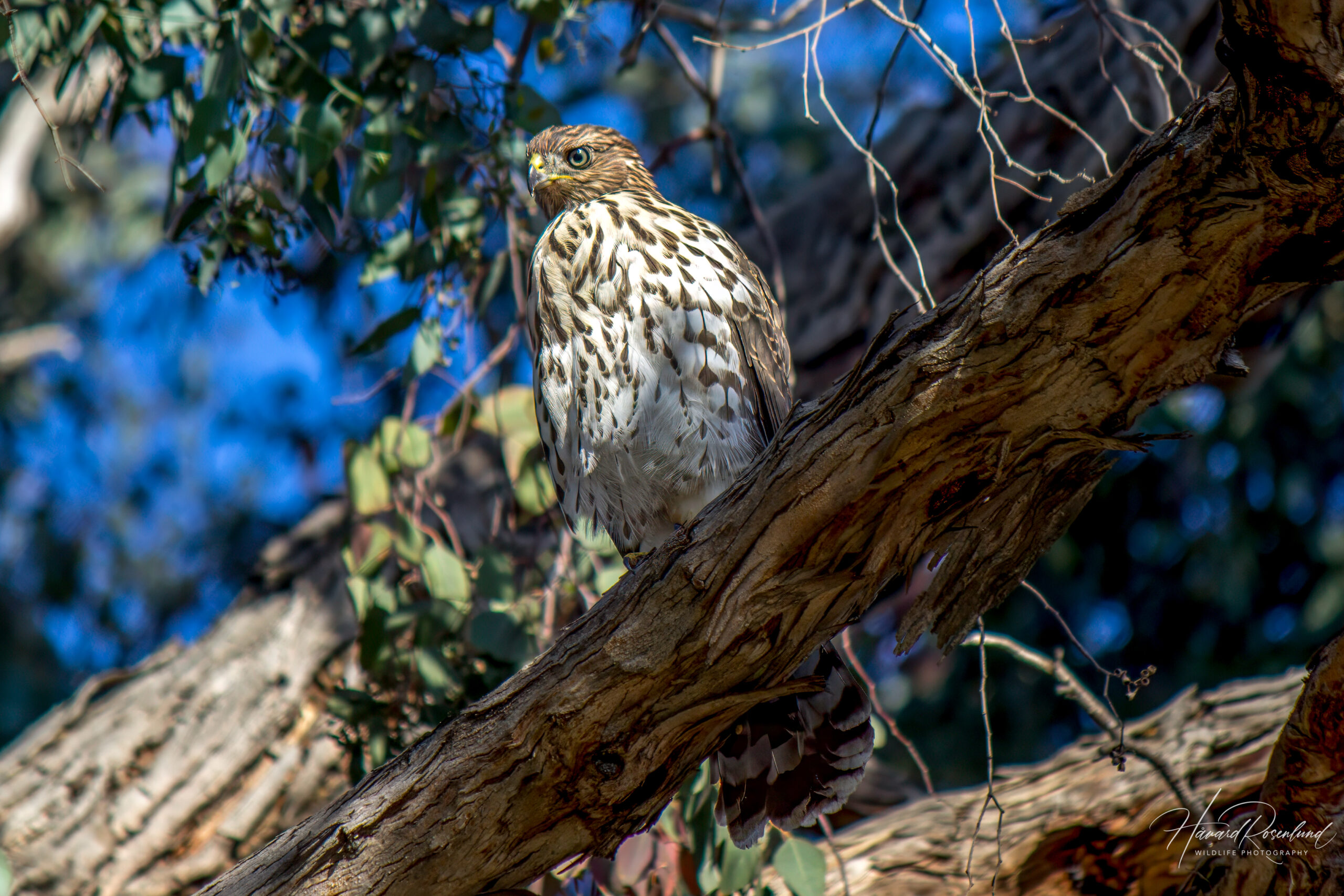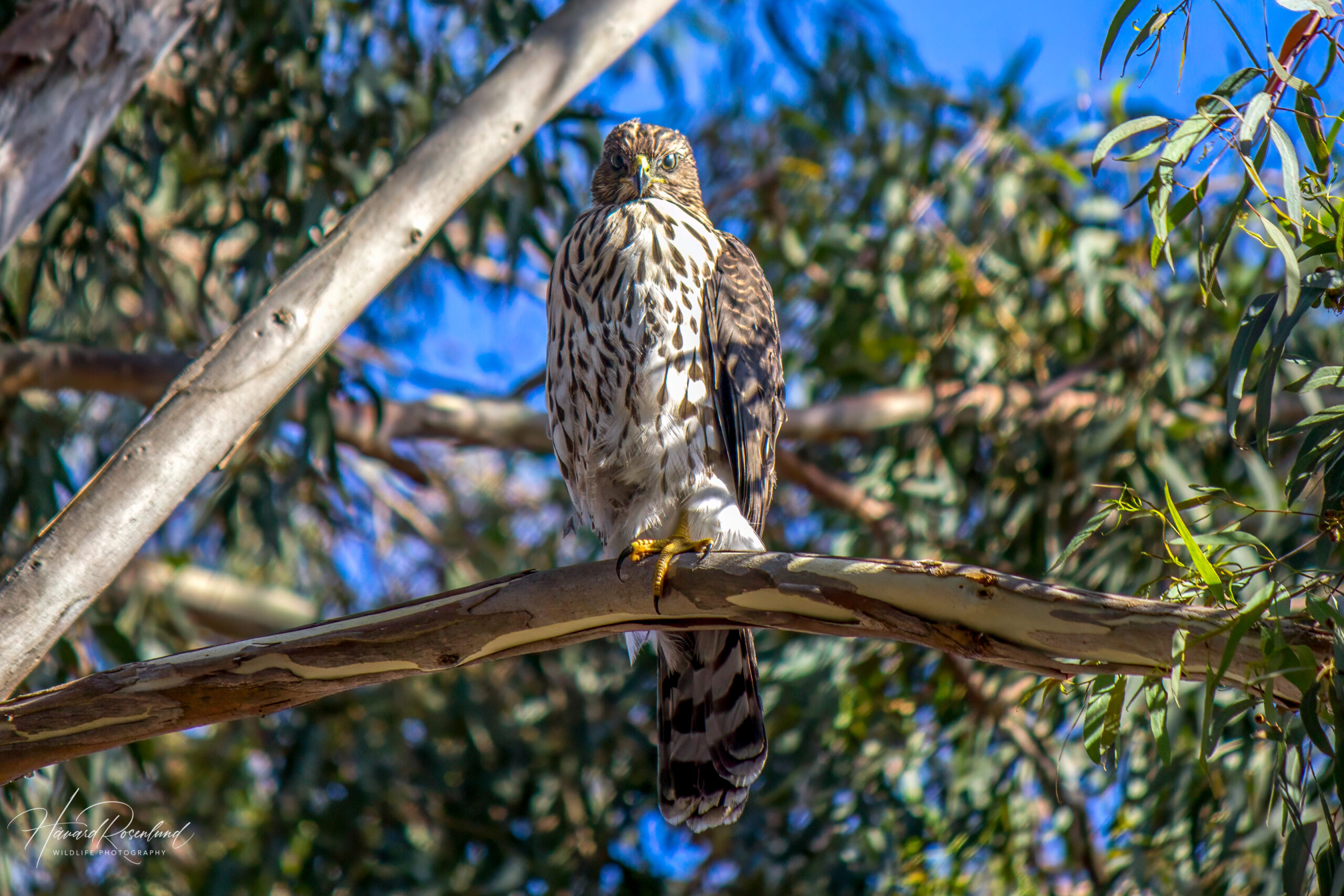Description
The Cooper’s hawk (Astur cooperii) is a medium-sized hawk native to North America. It has a length of about 35-50 cm (14–20 in) and a wingspan ranging from 60-90 cm (24 to 35 in). Males are significantly smaller than females, a common trait among birds of prey. This species is characterized by its blue-gray back, red eyes, and barred red-orange underparts. Juveniles display brown upperparts and pale underparts streaked with brown (as seen in the images above). The Cooper’s hawk is often confused with the similar-looking sharp-shinned hawk (Accipiter striatus), but it is larger with a more rounded tail and a different head shape.
Diet & habitat
Cooper’s hawks are found in various habitats, ranging from forested areas to suburban neighborhoods. They prefer wooded habitats with open areas nearby for hunting. Their diet primarily consists of birds and small mammals, which they capture with agility and speed, often in a rapid surprise attack. These hawks are also known to feed on insects and reptiles occasionally. Cooper’s hawks have been observed to exhibit a behavior known as “mantling,” where they spread their wings over prey to hide it from potential thieves.
Nesting
The breeding season of Cooper’s hawks generally occurs from March to May. They are monogamous during the breeding season, but a pair does not always stay together for life (which is common for many birds of prey). Both partners engage in constructing the nest, which is usually built in trees. The female lays 3 to 5 eggs, and incubation lasts about 30-36 days, mainly by the female. After hatching, the chicks fledge in about 4 to 5 weeks. During this time, both parents are involved in feeding and protecting the nestlings.
Status
The Cooper’s hawk is widespread and common within its range. It has experienced a population increase in many urban areas due to abundant prey like pigeons and other birds. It listed as least concern on the IUCN Red List.







